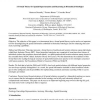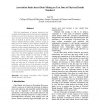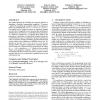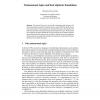26 search results - page 3 / 6 » Finding Reasons and Conclusion in a Basic Computer Science C... |
ARTMED
2006
13 years 9 months ago
2006
Objective: The objective of this paper is to demonstrate how a formal spatial theory can be used as an important tool for disambiguating the spatial information embodied in biomed...
CSO
2009
IEEE
14 years 4 months ago
2009
IEEE
With the development of modern electronic and computer technologies, sports training and competition became more and more technical. A great deal of data were recorded, including ...
COCO
2006
Springer
14 years 1 months ago
2006
Springer
We give an algorithm that learns any monotone Boolean function f : {-1, 1}n {-1, 1} to any constant accuracy, under the uniform distribution, in time polynomial in n and in the de...
SIGSOFT
2007
ACM
14 years 10 months ago
2007
ACM
The standard language for describing the asymptotic behavior of algorithms is theoretical computational complexity. We propose a method for describing the asymptotic behavior of p...
CSL
2006
Springer
14 years 1 months ago
2006
Springer
The goal of this note is to provide a background and references for the invited lecture presented at Computer Science Logic 2006. We briefly discuss motivations that led to the eme...




